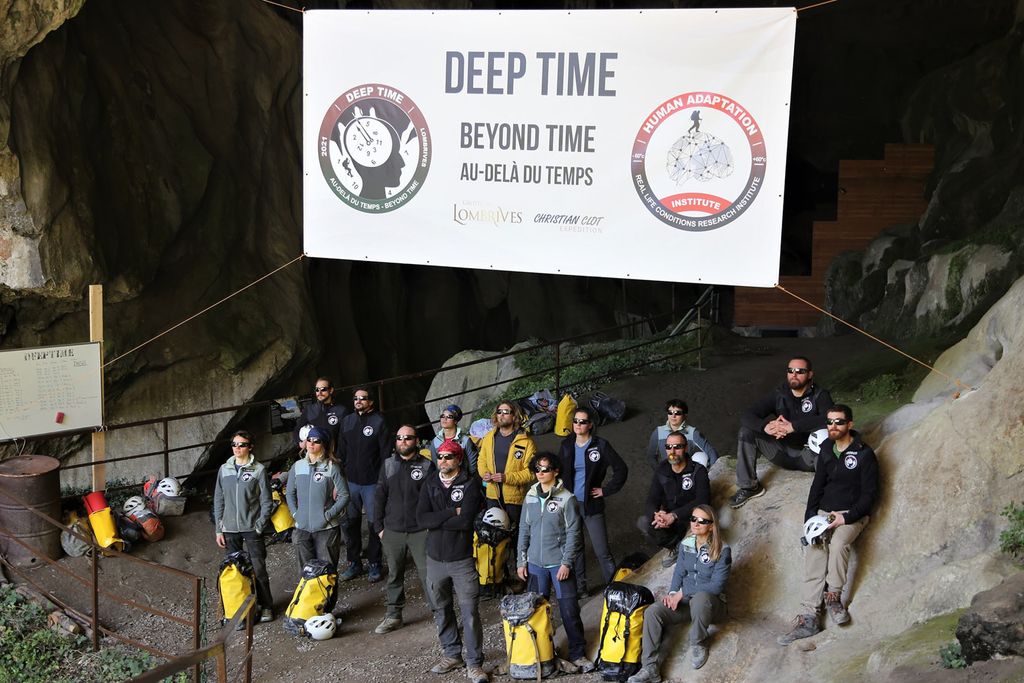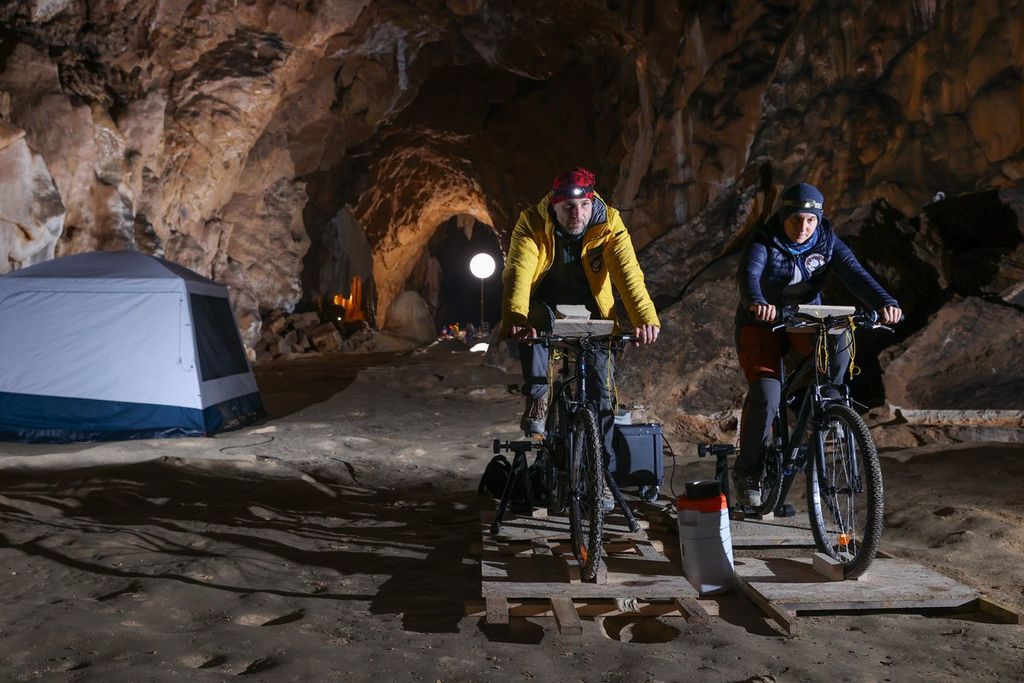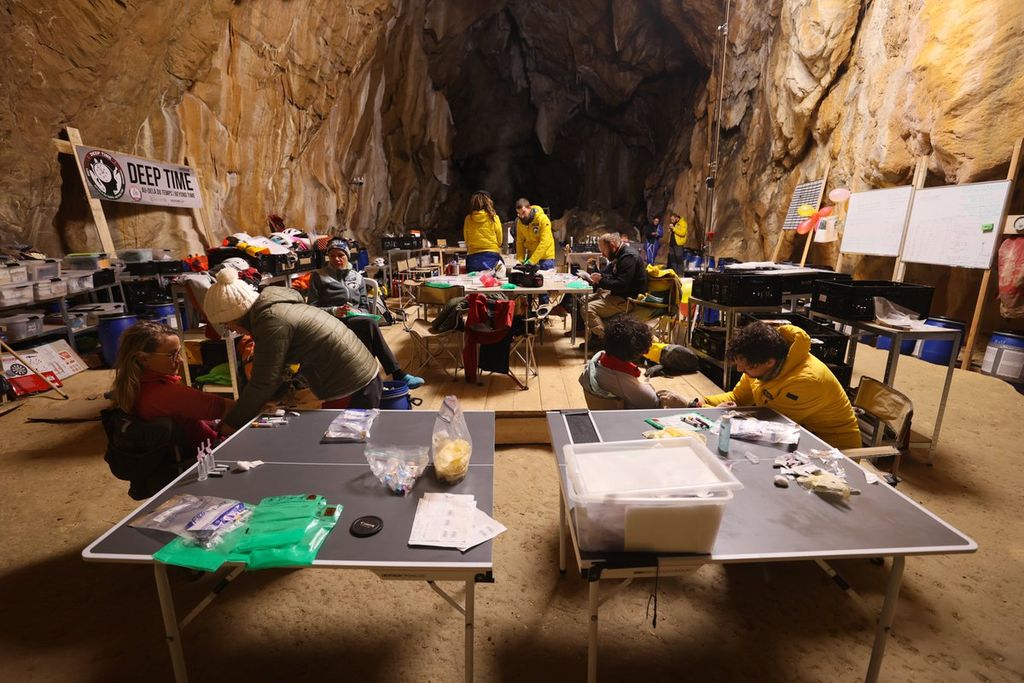Ornolac-Ussat-les-Bains, France —(Map)
Last Saturday, 15 people stepped out of a cave in France, blinking in the sunlight. As part of an experiment, they had spent the last 40 days underground with no sense of time other than their own sleep patterns.
The “Deep Time” experiment was run by the Human Adaptation Institute (HAI). The HAI is led by Christian Clot, an explorer and researcher who also took part in the experiment.

(Source: Human Adaptation Institute .)
Mr. Clot was joined by seven other men and seven women who entered Lombrives cave in mid-March. Lombrives cave is a large cave in southwestern France. It’s about 5 miles (8 kilometers) long, and has large, open rooms.
The experiment was designed to help answer some big questions, such as: How do humans handle things when they are put in a completely new and unusual situation?
😕
This image has not been loaded because of your cookie choices. To view the content, you can accept 'Non-necessary' cookies.
The “Deep Time” experiment was run by the Human Adaptation Institute, which is led by Christian Clot (above). Mr. Clot is an explorer and researcher who took part in the experiment and was joined by seven other men and seven women.
The 15 people lived inside the dark cave for 40 days with no connection to the outside world. It was cool inside the cave – about 50º Fahrenheit (10º Celsius), and the air was very damp.
The campers slept in tents. If they wanted light, they had to make it themselves by pedaling on a special bike. They had to get all of their water themselves by pulling it up from a well deep below the cave.
One of the most important parts of the Deep Time experiment was exploring how our brains keep track of time when there are no outside clues, like clocks or the movement of the sun. The campers were told to sleep and eat whenever they felt like it. Over time, different people developed different schedules.

(Source: Christian Clot, via Twitter.)
Because there were no clocks, they counted the days based on how many times they had slept. That didn’t match up with time in the outside world. When the 40-day experiment was over, most people thought they’d been in the cave for about 30 days. One man thought that only 23 days had passed.
During their time in the cave, the campers took on different small jobs and projects. Seeing how they worked together was another part of the experiment. For many campers, working on group projects was especially hard, since it was very difficult to set meeting times.
Thirty scientists were involved in the Deep Time study. All of the campers were given a series of tests before they ever went into the cave.

(Source: Human Adaptation Institute, via Twitter.)
They were also studied while they were in the cave. Their sleep patterns were recorded. Each person also swallowed a tiny thermometer, which sent their temperature back to a computer.
Last Friday, scientists entered the cave to let the people know the experiment was almost over. They gave the campers more tests as they cleaned up the cave.
Finally, at 10:30 in the morning, the campers – wearing sunglasses to protect their eyes – were taken outside to see sunlight for the first time in 40 days.
😕
This image has not been loaded because of your cookie choices. To view the content, you can accept 'Non-necessary' cookies.
Finally, at 10:30 in the morning, the campers – wearing sunglasses to protect their eyes – were taken outside to see sunlight for the first time in 40 days. Two-thirds of the campers said they wished they had a few more days in the cave.
Most people enjoyed the experience. Many were happy to have had a break from their normally busy lives. Two-thirds of the campers said they wished they had a few more days in the cave.
Did You Know…?
The researchers think this sort of study will be useful for understanding how people might behave on long trips in space.
This article has been updated to reflect the correct size of Lombrives cave.
😕
This map has not been loaded because of your cookie choices. To view the content, you can accept 'Non-necessary' cookies.
